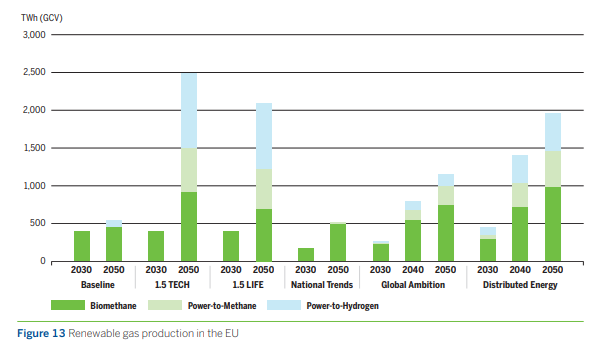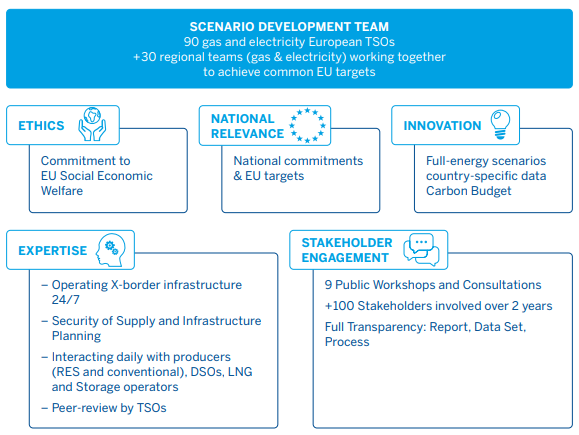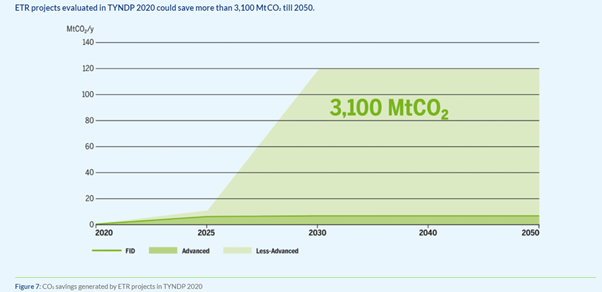Along with some serious challenges, 2020 brought about some great achievements. It was a very exciting year for the Corre Energy team and members of the Green Hydrogen Hub Consortium.
At the end of November, ENTOSOG (The European Network of Transmission System Operators for Gas) published their Ten-Year Network Development Plan. The plan is released every two years and the most recent, assesses how 154 transmission and 26 storage projects can contribute to Europe’s energy transition. This includes creating economic growth and employment.
What is the TYNDP?
The Ten-Year Network Development Plan (TYNDP) provides an overview of the European gas infrastructure and its future developments by mapping the integrated gas network according to a range of development scenarios. The TYNDP includes a European supply adequacy outlook and an assessment of the network resiliency.
This year as part of the TYNDP, there is an Energy Transition Related (ETR) Power to Gas (P2X) section, in which Corre Energy and the Green Hydrogen Hub are major part of. As indicated by the graph below, the power-to-Methane and Power-to-Hydrogen are major contributors to renewable gas production in the EU.

Why is this significant?
“Clean hydrogen is key for a strong, competitive, and carbon-free European economy. We are leading the world in this technology and we want to stay ahead.” – Executive Vice President of the EU Commission, Frans Timmermans.
The ETR projects are defined in the TYNDP 2020 Practical Implementation Document as a project which facilitates the integration of renewables, the achievements of decarbonisation and efficiency targets, reduction of other air pollutants, sector coupling initiatives and, more generally, all projects specifically aimed at the energy system transformation for reaching sustainability. They also aid in greenhouse gas emissions avoidance.
In order to be a part of the TYNDP plan, there is a certain level of assessment required. Corre Energy work ‘expert to expert’ with ENSTOG and ENTSO-E to ensure that portfolio benefits are captured in respective modelling. By way of example, you can view the Green Hydrogen Hub CAES project details for the TYNDP here.
ENTSOG have worked on holistic scenarios, considering the full European energy system. This is built in cooperation with ENTSO-E to represent differentiated paths towards achieving the EU decarbonisation targets. For the first time, TYNDP 2020 includes COP21 compliant scenarios, building on a carbon budget approach to reach Net-Zero 2050. The storylines for building the TYNDP scenarios are below.

2020 Gas TYNDP
ENTSOG have developed the TYNDP 2020 by building on the expertise and cooperation of more than 90 TSO experts and private project promoters from all over Europe.
The TYNDP 2020 concludes that almost all gas infrastructure gaps can be addressed in the next 5 years by projects already initiated, including supply route disruptions. These investments will be mostly commissioned before 2025 and will bring affordable, diversified and competitive supplies of gas, increasingly decarbonised over time.
This TYNDP has resulted in the first-ever full energy scenario at European and national level with the highest level of transparency including numerous workshops and dialogue with stakeholders. This has been done with the objective to support the European energy and climate ambitions and in the European citizens’ best social-economic welfare interests.
How does the Green Hydrogen Hub help achieve this?
Energy storage completed in time with electrolysers can integrate gigawatts of renewables. Thus, providing member states and Europe with a reduced cost of decarbonisation through sector coupling.
‘A dedicated hydrogen infrastructure as well as a gas network with hydrogen blending can support the development of supply and demand including hydrogen locally produced within the EU, while ensuring security of supply' 1. The diagram below highlights the savings generated by ETR projects until 2050.

Corre Energy’s Green Hydrogen Hub portfolio projects are strategically located near to gas and electricity transmission networks. One example is our Dutch Zuidwending Project (PCI 1.17). It’s located adjacent to the ‘gas roundabout of Europe’, ideally situated for interconnection via the high voltage electricity network into Germany, so the electricity product can be transported throughout several Member States which accordingly enhances Security of Supply. Furthermore, this project will directly connect with gigawatts of primary renewable sources helping to balance their fluctuating profile and storing excess electricity in the form of Compressed Air in underground caverns.
Talk to us about customer opportunities and part purchase agreements today.

